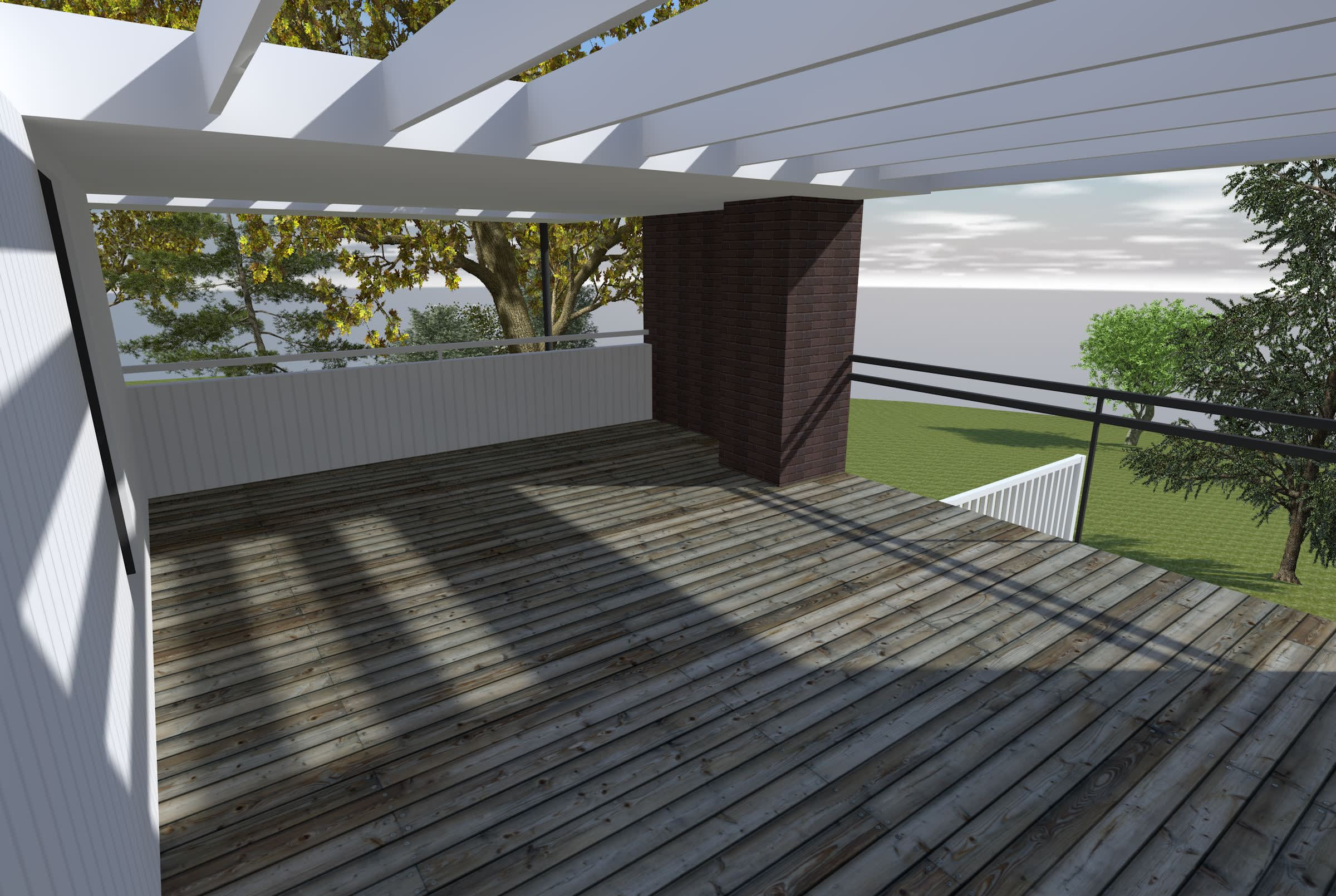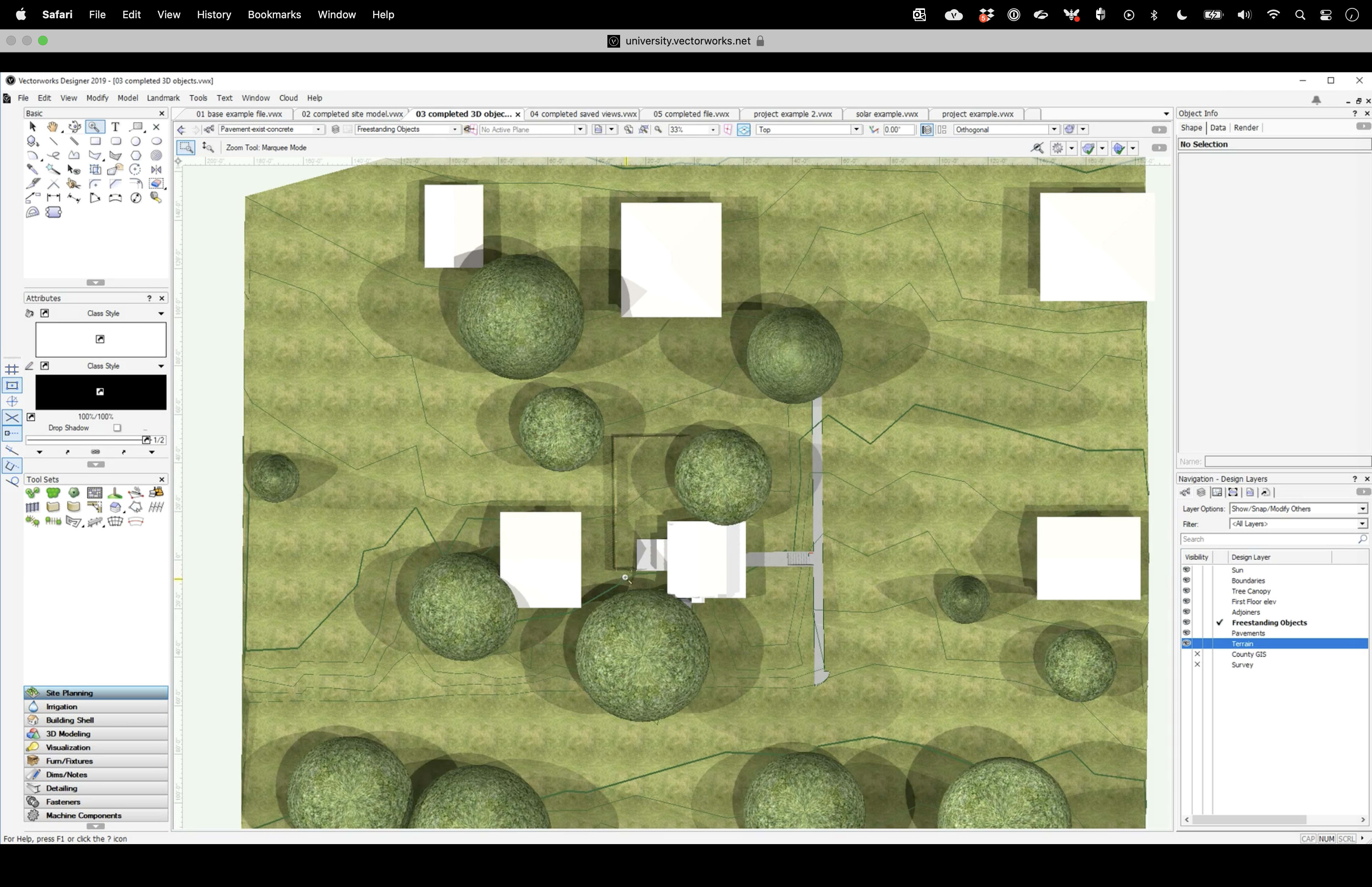Clients often prioritize designated sun or shade areas on their property for various purposes. Moreover, clients may seek shade solutions to enhance the energy efficiency of their buildings. However, waiting a year to observe the sun/shade patterns on a site is not a practical approach to determining the predominant sun/shade conditions.
This is why sun and shade planning in a digital environment is extraordinarily useful. In Vectorworks, you have access tools built specifically for this purpose.
Read onwards to learn more about the fundamentals of sun/shade analysis in Vectorworks, and how you can use the powerful Heliodon tool to create the more in-depth study known as shade prints.
You Need 3D for Sun/Shade Analysis
If you want to analyze your site’s shade conditions ahead of installation, you need to have a 3D model. You can read more about the advantages you gain with 3D modeling here.
Heliodon
We mention the Heliodon tool so often because it is — or should be — a standard piece of your site design workflow. The tool allows you to accurately position the sun in your design file so you can simulate its effects at various times of the day. For example, the following images show projected shade at 3 p.m. and 12 p.m., respectively, at this project’s location.
The tool allows you to select the city in which you’re designing and apply the appropriate latitude and longitude. Or, if you’re working with a georeferenced file, the Heliodon can automatically recognize this information. This is the preferred option.


(Above) A sun/shade study with Vectorworks’ Heliodon tool representing 3 p.m. and 12 p.m., respectively, for a residence in central Massachusetts. Courtesy of Maffei Landscape Design.
Shade Prints
Shade prints are slightly different from a traditional sun/shade analysis. This method uses multiple Heliodon objects, each set at a lower light intensity, to create a collective shade “print,” or a prolonged view of shade through multiple hours, days, weeks, or even months.
There are several ways you can use shade prints for analysis in your projects, such as determining plant suitability, addressing the urban heat island effect, and stormwater management.

A shade print study in Vectorworks showing the predominant shade conditions provided by the site’s trees. Courtesy of Maffei Landscape Design.
Plant Suitability
The most evident use of shade prints is for plant suitability.
Plants with full-shade requirements would be best suited for areas that are always in shade. Creating a shade print allows you to identify these areas. Similarly, plants requiring partial shade would do well where the shade print shows partial coverage, and plants requiring full sun would thrive where there is no shade print.
Note that shade requirements are one piece of the puzzle for plant suitability. You’ll of course want to consider other factors like water and soil needs to determine the best plants.
Urban Heat Island Effect
According to the U.S. Environmental Protection Agency (EPA):
Heat islands are urbanized areas that experience higher temperatures than outlying areas. Structures such as buildings, roads, and other infrastructure absorb and re-emit the sun’s heat more than natural landscapes such as forests and water bodies.
Creating a shade print allows you to strategically apply reflective surfaces in full-sun areas, reducing the urban heat island effect.
Stormwater Management
Shade prints can also help with stormwater management. A shade print allows you to identify areas that will be in full sun, which are the best places to plan for evaporation as part of your stormwater management plan.
Stay in the know with the latest insights
Subscribers receive news, customer stories, success and learning tips, event information, and other important announcements form Vectorworks.
By submitting this form, you agree that Vectorworks, Inc. and its authorized partners may contact you in regards to news, offers, and the use of our software, services, and platforms. Learn more about our privacy practices and your data on our privacy page.*